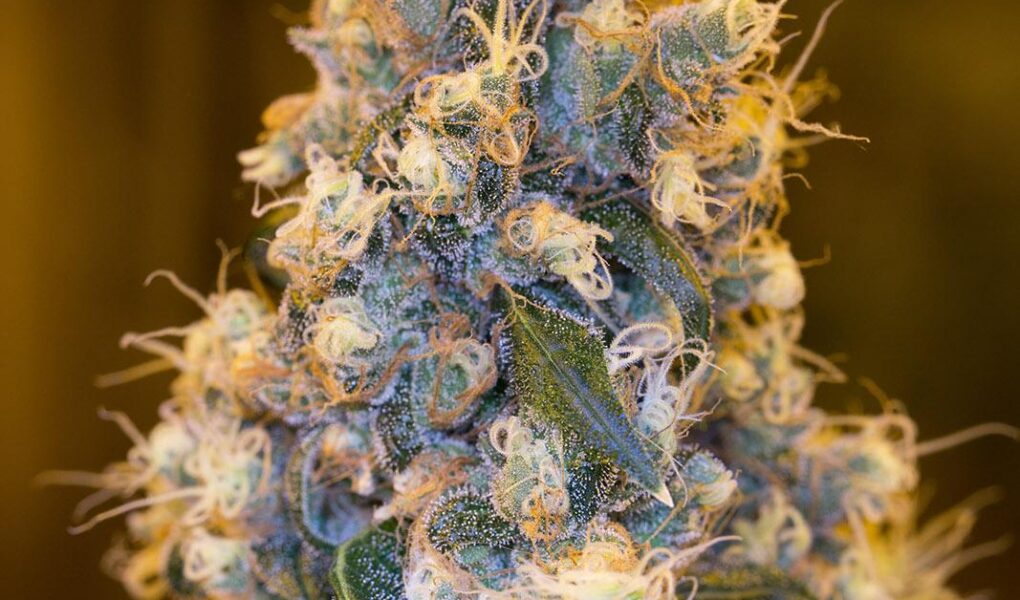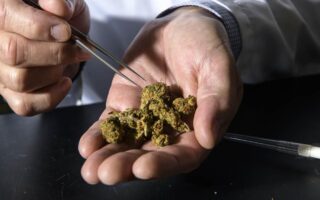In a world where the colors of nature often inspire wonder, the emergence of blue cannabis has sparked fascination among enthusiasts and cultivators alike. This unique strain, characterized by its striking azure hues, offers more than just a visual spectacle; it represents a fusion of artistry and botany that captivates the imagination. As we delve into the world of blue cannabis, we’ll explore its origins, the science behind its vibrant coloration, and the potential benefits that set it apart in the ever-evolving landscape of cannabis cultivation. Whether you’re a seasoned connoisseur or a curious newcomer, this exploration will illuminate the intriguing story of blue cannabis and its place in the diverse palette of this remarkable plant.
Table of Contents
- Exploring the Unique Traits of Blue Cannabis Varieties
- The Science Behind the Color: What Makes Cannabis Blue
- Cultivation Insights: Best Practices for Growing Blue Cannabis
- Terpene Profiles and Effects: The Flavorful Experience of Blue Strains
- Q&A
- The Way Forward
Exploring the Unique Traits of Blue Cannabis Varieties
The allure of blue cannabis varieties lies not only in their eye-catching hues but also in their distinctive characteristics. These strains often exhibit a wide spectrum of colors, ranging from deep indigo to soft lavender, depending on their genetic lineage and growing conditions. The vibrant pigmentation is primarily due to the presence of anthocyanins, which are pigments responsible for the stunning shades found in various fruits and flowers. The uniqueness of blue cannabis goes beyond aesthetics; many users report that these varieties offer a distinct flavor profile, which can include sweet berry notes, spicy undertones, and earthy aromas. The combination of striking visuals and unique flavors makes them a valuable addition to any cannabis enthusiast’s collection.
In addition to their striking appearance and flavor, blue cannabis strains are often celebrated for their effects and therapeutic benefits. Many of these varieties are known to provide a balanced experience, making them suitable for both recreational and medicinal use. Some key traits include:
- Relaxation: Ideal for unwinding after a long day.
- Focus: Certain strains can enhance concentration, making them perfect for creative tasks.
- Relief: Known for alleviating symptoms of stress, anxiety, and pain.
For those keen on exploring blue cannabis, understanding the differences between popular strains can aid in finding the perfect match. Below is a simple comparison of a few widely appreciated blue cannabis strains:
| Strain Name | THC Content | Flavor Profile | Primary Effects |
|---|---|---|---|
| Blue Dream | 17-24% | Berry, Citrus | Relaxing, Uplifting |
| Blueberry | 16-24% | Sweet, Fruity | Calming, Happy |
| Purple Haze | 14-20% | Earthy, Berry | Creative, Energizing |
The Science Behind the Color: What Makes Cannabis Blue
The captivating hue of blue cannabis goes beyond aesthetics, stemming from the intricate chemistry of the plant. At the heart of this fascinating coloration are anthocyanins, a group of pigments that fall under the flavonoid category. When exposed to certain environmental conditions, such as temperature fluctuations and pH levels, these pigments can express themselves more prominently, resulting in stunning shades of blue or purple. This same pigment contributes to the colors seen in various fruits and vegetables, illustrating that nature has a way of intertwining beauty and biology across species.
The production of anthocyanins is influenced by several factors, including genetics and growing conditions. Key aspects that contribute to the development of blue hues in cannabis include:
- Temperature: Cooler nighttime temperatures often enhance anthocyanin production.
- Light Exposure: The intensity and quality of light can also stimulate the expression of these pigments.
- Soil pH: A higher acidity in the soil may improve color vibrancy.
Understanding these factors not only sheds light on the vibrant diversity within cannabis strains but also highlights the plant’s adaptability to its environment, making blue cannabis an intriguing subject for both growers and connoisseurs alike.
Cultivation Insights: Best Practices for Growing Blue Cannabis
Growing blue cannabis requires a keen understanding of the unique traits that set it apart from other strains. To achieve that stunning hue and rich flavor profile, start by selecting the right genetics. Look for reputable breeders known for their blue cannabis varieties, such as Blueberry or Blue Dream, known for their vibrant coloration and potent effects. Once you’ve secured quality seeds, prioritize maintaining optimal growing conditions. Ideal temperatures range between 65°F to 80°F (18°C to 27°C) during the day and slightly cooler at night to promote color development. Additionally, using a nutrient-rich soil with high organic matter can enhance the flavor and aroma of the buds.
Watering is another critical aspect that can impact the health and appearance of blue cannabis. Consider implementing a low-stress training (LST) approach to encourage lateral growth and maximize light exposure to all parts of the plant. Along with proper training techniques, ensure your plants experience an appropriate light cycle, aiming for 18 hours of light during the vegetative stage and 12 hours of light during flowering. Moreover, monitoring pH levels in the soil or hydroponic system is essential, ideally maintaining a pH of around 6.0 to 6.5 for optimal nutrient uptake. Following these best practices can lead to not only stunning blue hues but also an abundant and flavorful harvest.
Terpene Profiles and Effects: The Flavorful Experience of Blue Strains
The allure of blue cannabis strains goes beyond their striking color; it’s deeply rooted in their terpene profiles, which contribute significantly to their unique flavor and aroma. These compounds not only affect the sensory experience but also play a role in the overall effects users may experience. In blue strains, you’ll often find a delightful mix of myrcene, pinene, and caryophyllene, each imparting distinct qualities:
- Myrcene: Offers earthy and musky notes, often promoting relaxation.
- Pinene: Provides a fresh pine scent, known to enhance focus and memory.
- Caryophyllene: Adds a spicy kick, recognized for its potential anti-inflammatory effects.
When you indulge in these flavorful cannabis strains, the combination of these terpenes creates a unique experience that can be both uplifting and calming. To easily grasp the prominent terpenes and their associated effects in select blue cannabis strains, consider the following table:
| Strain Name | Prominent Terpenes | Effect |
|---|---|---|
| Blue Dream | Myrcene, Pinene | Relaxation, Euphoria |
| Blueberry | Caryophyllene, Limonene | Calming, Happy |
| Blue Magoo | Humulene, Myrcene | Soothing, Sedative |
This vibrant interplay of flavors and effects makes blue strains a popular choice among cannabis connoisseurs, ensuring that every session is a flavorful journey that captivates both the palate and mind.
Q&A
Q&A: Exploring the Enigma of Blue Cannabis
Q1: What exactly is blue cannabis?
A1: Blue cannabis refers to cannabis strains that exhibit striking blue or purple hues in their flowers, leaves, or buds. This color is primarily due to the presence of anthocyanins, pigments also found in various fruits and vegetables. These strains can range from deep indigo to lighter lavender shades, creating a visually captivating experience for cultivators and consumers alike.
Q2: How does blue cannabis differ from other cannabis strains?
A2: The primary difference lies in the aesthetic appeal and, often, the terpene and cannabinoid profiles. While many strains have green foliage, the blue coloration can indicate variations in cultivation conditions or genetics. It’s important to note that the color doesn’t significantly alter the effects, but it can hint at unique flavor notes and aromas that set blue strains apart from their green counterparts.
Q3: Are there specific health benefits associated with blue cannabis?
A3: Health benefits associated with blue cannabis are not inherently different from those of other strains. The effects largely depend on the cannabinoids (like THC and CBD) and terpenes present in the strain. However, the unique pigments might suggest antioxidant properties, similar to those found in blue foods like blueberries. Ultimately, the medicinal benefits are determined by the specific strain and its chemical makeup rather than its color alone.
Q4: What are some popular blue cannabis strains?
A4: Several well-known strains exhibit blue characteristics. Famous examples include Blue Dream, known for its balanced effects and sweet berry aroma, and Blueberry, a classic strain celebrated for its fruity flavor and relaxing effects. Each of these strains offers a different experience, but they all share that mesmerizing blue color.
Q5: How can one cultivate blue cannabis?
A5: Cultivating blue cannabis requires attention to genetics, environmental factors, and cultivation methods. Growers can enhance color expression by managing temperature, light exposure, and nutrient levels. Lowering nighttime temperatures slightly can help bring out those vibrant hues, while maintaining healthy plant care will ensure robust growth. It’s a delicate balance that requires both art and science.
Q6: Is blue cannabis more potent than other types?
A6: The color of cannabis does not directly correlate with its potency. Potency is determined by the strain’s THC and CBD levels, not its physical appearance. A blue strain can be low in THC while another green strain might be a powerhouse. Therefore, it’s prudent to examine lab results for cannabinoid content rather than relying solely on color.
Q7: What do consumers look for in blue cannabis?
A7: Consumers are often attracted to blue cannabis for its visual appeal and unique flavor profiles. Many also seek specific effects that are associated with the individual strain, such as relaxation, euphoria, or increased creativity. For others, the novelty of blue cannabis can enhance the overall experience, making it a fun addition to their collection.
Q8: Are there any cultural or historical significances tied to blue cannabis?
A8: While blue cannabis strains don’t have a rich history of cultural significance as some landrace strains do, their emergence in the cannabis community has sparked interest and curiosity. They serve as a reminder of the vast possibilities within cannabis breeding and cultivation, while also inspiring artwork, branding, and even fashion in the cannabusiness landscape.
Q9: Where can one find blue cannabis products?
A9: Blue cannabis strains can be found in dispensaries where state laws permit. As the market for unique and rare strains grows, more shops are likely to stock these colorful options. Additionally, home growers can seek out seeds online to cultivate their own blue cannabis, tapping into the allure of this fascinating variety.
Q10: What’s the future of blue cannabis in the industry?
A10: The future of blue cannabis holds promising potential as interest in exotic strains continues to rise. Breeders are likely to cultivate additional variations, enhancing cannabinoid profiles while maintaining those enchanting colors. As consumers become more adventurous in their choices, blue cannabis may establish itself as a staple in the cannabis community, celebrated for both its beauty and its effects.
The Way Forward
As we draw the curtain on our exploration of blue cannabis, it’s clear that this unique strain offers more than just vibrant hues—it opens the door to a world of potential benefits and intriguing experiences. Whether you’re drawn to the aesthetic appeal, the potential therapeutic effects, or simply the lore surrounding this distinctive plant, blue cannabis invites a deeper conversation about cannabis cultivation, genetics, and the myriad ways in which it can enrich our lives. As research continues to unfold and the community embraces these diverse strains, the journey into the colorful landscape of cannabis is only just beginning. Here’s to the discoveries ahead and the myriad shades this remarkable plant has to offer.



